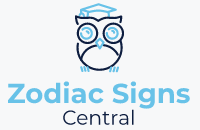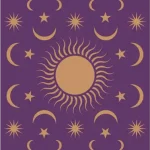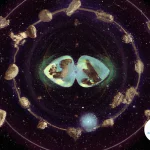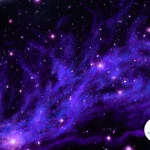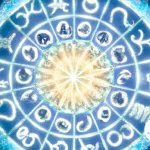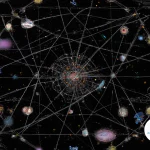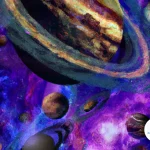Imagine a world where the stars held the power to shape our reality. As far back as ancient civilizations, the connection between astrology and mythology has captivated the human imagination. Astrology, the belief that celestial bodies influence human behavior and destiny, is deeply intertwined with mythology, the rich tapestry of symbolic stories that explain the essence of life. From the origins of astrology in mythology to the impact of ancient symbols on modern astrological interpretations, this article explores the fascinating relationship between these two disciplines. Discover how mythological archetypes, symbols, and stories continue to shape our understanding of astrology and anyone’s cosmic connection. Are you ready to embark on a journey through the realms of myth and the stars?
The Historical Origins of Astrology and Mythology
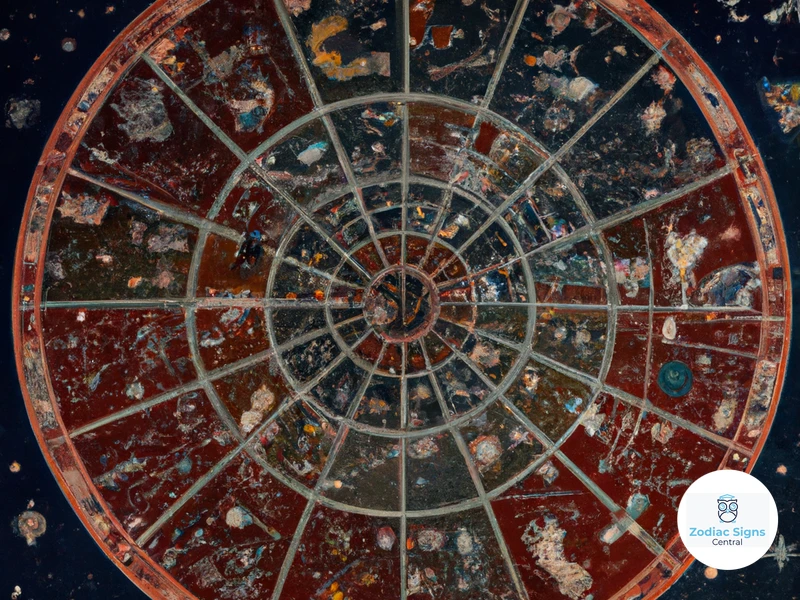
The intricate relationship between astrology and mythology dates back to ancient times. Both astrology and mythology developed independently in various ancient civilizations, yet they often intersected and influenced one another. Astrology’s roots in mythology can be traced to Mesopotamia, where early astrologers studied the heavens and associated celestial movements with divine beings. The Babylonians, for example, believed that the gods and goddesses resided in the stars and planets and that their actions influenced human affairs. Similarly, in ancient Egypt, astrology was intertwined with the worship of gods and goddesses, as the movements of the sun and moon were believed to reflect their divine will. Astrology was also deeply intertwined with mythology in ancient Greece, where celestial bodies were associated with deities and myths. The ancient Greeks believed that the constellations represented the gods and heroes, such as Zeus, Hera, and Hercules, and their stories were woven into the fabric of astrology. The influence of Greek astrology and mythology spread throughout the world, eventually shaping the astrological traditions of Rome and beyond. So, the historical origins of astrology and mythology are deeply intertwined, with mythology providing the foundation and symbolism that astrology later built upon.
Astrology’s Roots in Mythology
Astrology’s roots in mythology run deep, as the ancient civilizations saw a powerful connection between the celestial bodies and the divine. In Mesopotamia, the birthplace of astrology, the gods and goddesses were believed to reside in the stars and planets, shaping human destiny through their movements. The Babylonians, known for their advanced astronomical observations, assigned specific deities to each planet. For example, Marduk was associated with Jupiter, Ishtar with Venus, and Nergal with Mars. The Romans also embraced astrology’s roots in mythology, aligning their gods with the planets. Jupiter became associated with Zeus, Venus with Aphrodite, and Mars with Ares. This association between celestial bodies and mythological figures not only added a spiritual dimension to astrology but also provided a framework for understanding the roles and influences of different planets in a birth chart. Today, astrology still carries the echoes of its mythological origins, as the symbolism and stories of the gods and goddesses continue to shape our interpretations and understanding of the cosmos.
How Ancient Civilizations Interpreted the Stars
How Ancient Civilizations Interpreted the Stars: The ancient civilizations had a deep fascination with the stars and developed unique methods to interpret their movements and patterns. Let’s delve into the intriguing ways in which these civilizations understood the celestial bodies:
1. Mesopotamia: The Babylonians, considered the pioneers of astrology, developed an intricate system known as omen astrology. They believed that celestial events, such as eclipses and planetary alignments, were omens from the gods. Priests meticulously recorded these omens and interpreted their meanings, which influenced decision-making in various aspects of life, from politics to agriculture.
2. Egypt: In ancient Egypt, the stars played a central role in religious practices and mythology. The Egyptians associated certain stars with their deities, such as Osiris and Isis, and believed that their celestial movements reflected the gods’ will. Additionally, the rising of specific stars, like Sirius (known as the “Dog Star”), marked the beginning of the Nile flood, symbolizing renewal and fertility.
3. Greece: Greek astrology drew inspiration from both Mesopotamia and Egypt. They developed the concept of the zodiac, dividing the sky into twelve equal sections corresponding to specific constellations. The Greeks believed that each zodiac sign held unique characteristics and influenced individual personalities and destinies.
4. India: In ancient India, astrology was known as Jyotish, meaning “science of light.” Indian astrologers observed the stars and planets to predict events and understand the cosmic influence on human lives. They believed that the positions of celestial bodies at the time of a person’s birth had a profound impact on their personality and life path.
5. China: Chinese astrology focused on the lunar calendar and the twelve animal signs associated with each year in the Chinese zodiac. The Chinese believed that the position of the moon and the planets influenced a person’s character traits and compatibility with others.
These ancient civilizations employed diverse methodologies to interpret the stars, incorporating mythology, religion, and observation. Their astrological practices laid the foundation for the development of astrology as we know it today, highlighting the enduring connection between the heavenly bodies and human existence. [For more on astrology and compatibility, check out this guide to astrology love compatibility.]
Mythological Archetypes in Astrology
In astrology, mythological archetypes play a significant role in understanding the characteristics and traits associated with different zodiac signs and planets. Each zodiac sign has its own mythological origins that provide deeper insights into the qualities and energies attributed to them. Let’s delve into some of these archetypes and their mythological connections:
The Zodiac Signs and Their Mythological Origins:
– Aries: The first sign of the zodiac is associated with the adventurous and impulsive nature of the Greek hero, Jason from the myth of the Golden Fleece.
– Taurus: People born under the sign of Taurus share the same steadfastness and determination as the bull from the myth of the Minotaur.
– Gemini: Gemini, symbolized by the Twins, can be linked to the mythical brothers Castor and Pollux known for their inseparable bond.
– Cancer: The nurturing and protective qualities of Cancer draw parallels to the story of the ancient Greek goddess Demeter, who represents motherhood and fertility.
– Leo: Just like the majestic lion, Hercules is associated with Leo, symbolizing strength, courage, and leadership.
– Virgo: The attention to detail and analytical nature of Virgos align with Astraea, the Greek goddess of justice and purity.
– Libra: Libra embodies balance and harmony, similar to the description of Aphrodite, the goddess of love and beauty.
– Scorpio: The intensity and transformative nature of Scorpio reflect the story of Hades and Persephone, signifying cycles of life and death.
– Sagittarius: Known for their love of adventure and exploration, Sagittarians are akin to the mythological character Chiron, the wise centaur and mentor to heroes.
– Capricorn: The determined and ambitious nature of Capricorn finds resonance with the story of Saturn, the god of time and discipline.
– Aquarius: Aquarius, represented by the Water Bearer, shares similarities with Ganymede, a young cupbearer to the gods in Greek mythology.
– Pisces: The empathetic and intuitive qualities of Pisces find their inspiration in the story of the ancient Greek god Poseidon, ruling over the seas.
By exploring these mythological connections, astrologers gain profound insights into the archetypal energies that shape each zodiac sign, allowing for a deeper understanding of individuals’ personalities and behaviors. It’s important to note that while these mythological associations provide rich symbolism, astrology goes beyond strict adherence to these archetypes, embracing the uniqueness and complexity of each individual’s birth chart.
The Zodiac Signs and Their Mythological Origins
The twelve zodiac signs have long captured our imaginations with their rich symbolism and mythological origins. Each sign is associated with a specific constellation, which in turn has a story rooted in mythology. Aries, the first sign of the zodiac, finds its mythological origin in the tale of the Golden Ram from Greek mythology. It represents the ram that carried Phrixus and Helle to safety. Taurus is associated with the story of the Greek mythological creature, the bull that Zeus transformed into before abducting Europa. Gemini is symbolized by the twin brothers Castor and Pollux from Greek mythology, known as the Dioscuri. The story of Cancer finds its roots in the myth of the giant crab that Hercules battled during his fight with the Hydra. Leo, the regal lion, represents the Nemean Lion that was slain by Hercules during his legendary twelve labors. Virgo, the symbol of purity and innocence, is often associated with the goddess of agriculture, Demeter. The scales of Libra symbolize the goddess of justice, Astraea, in Greek mythology. The scorpion in Scorpio is tied to the story of Orion and the scorpion, a tale of revenge. Sagittarius draws its centaur symbol from the wise and brave centaurs of Greek mythology, particularly Chiron. Capricorn, the sea-goat, has ties to the god Pan and the fish-tailed goat named Pricus from Greek mythology. Aquarius represents the water bearer, Ganymede, who was taken to Mount Olympus by Zeus. Lastly, Pisces is associated with the story of Aphrodite and her son Eros, who transformed into fish to escape the clutches of the fearsome Typhon. These mythological origins add depth and meaning to each zodiac sign, revealing the echoes of ancient stories embedded within the astrological framework we use today.
Planetary Gods and Goddesses in Astrology
In astrology, the planets play a crucial role in shaping our personalities and influencing various aspects of our lives. Each planet is associated with a specific god or goddess from mythology, adding depth and symbolism to astrological interpretations. The planetary gods and goddesses in astrology represent different archetypal energies and qualities that manifest in our individual charts. For example, Mercury, the planet of communication and intellect, is associated with the Roman god Mercury or Greek god Hermes. Known for his quick wit and cunning, Mercury mirrors the planet’s influence on our thoughts, speech, and learning abilities. Venus, the planet of love and beauty, is linked to both the Roman goddess Venus and the Greek goddess Aphrodite. These goddesses embody the qualities of harmony, sensuality, and attraction that Venus represents in astrology. Moving further out in the solar system, we encounter Mars, the planet of action and assertiveness, associated with the Roman god Mars or the Greek god Ares. Mars embodies the warrior archetype, representing our drive, passion, and physical energy. Each planetary deity adds a layer of mythology to our astrological understanding, infusing our charts with the essence of these ancient gods and goddesses. By exploring the mythological stories and characteristics associated with each planet, we can gain deeper insights into their astrological influences on our lives.
Comparing Astrological Archetypes to Mythological Characters
Astrological archetypes are symbolic representations of the various personalities, traits, and characteristics associated with each zodiac sign. These archetypes can be compared to mythological characters in order to better understand and interpret the qualities of each sign. Let’s explore some key comparisons:
1. Aries (The Ram): In astrology, Aries is represented by the ram, a symbol of dynamic energy and assertiveness. This can be compared to the mythological character of Ares, the Greek god of war, known for his courage and passion for battle.
2. Taurus (The Bull): Taurus is symbolized by the bull, representing strength, stability, and a grounded nature. This archetype can be linked to the mythological character of Zeus, the king of the gods, known for his steadfastness and determination.
3. Gemini (The Twins): Gemini is characterized by the duality of its twins, representing adaptability, communication, and versatility. This archetype is reminiscent of the mythological twins Castor and Pollux, known for their close bond and ability to navigate different situations.
4. Cancer (The Crab): Cancer is symbolized by the crab, representing protectiveness, sensitivity, and emotional depth. This archetype can be linked to the mythological character of Artemis, the goddess of the moon and childbirth, known for her nurturing and caring nature.
5. Leo (The Lion): Leo is symbolized by the lion, representing leadership, creativity, and self-expression. This archetype can be compared to the mythological character of Apollon, the god of the sun and arts, known for his charisma and passion.
6. Virgo (The Virgin): Virgo is characterized by the purity and practicality of the virgin, symbolizing attention to detail, organization, and analytical thinking. This archetype can be linked to the mythological character of Athena, the goddess of wisdom and knowledge, known for her intelligent and methodical nature.
7. Libra (The Scales): Libra is represented by the scales, symbolizing balance, harmony, and justice. This archetype can be compared to the mythological character of Themis, the goddess of divine law and order, known for her fairness and diplomacy.
8. Scorpio (The Scorpion): Scorpio is symbolized by the scorpion, representing intensity, passion, and transformation. This archetype can be linked to the mythological character of Hades, the god of the underworld, known for his mysterious and profound nature.
9. Sagittarius (The Archer): Sagittarius is characterized by the archer, representing adventure, curiosity, and philosophical pursuits. This archetype can be compared to the mythological character of Artemis, the goddess of the hunt and wilderness, known for her love for exploration and pursuit of knowledge.
10. Capricorn (The Goat): Capricorn is symbolized by the goat, representing ambition, responsibility, and discipline. This archetype can be linked to the mythological character of Saturn, the god of time and wisdom, known for his determination and strict adherence to rules.
11. Aquarius (The Water Bearer): Aquarius is characterized by the water bearer, symbolizing humanitarianism, innovation, and intellectual pursuits. This archetype can be compared to the mythological character of Prometheus, the Titan god known for bringing fire and knowledge to humanity, representing progress and forward-thinking.
12. Pisces (The Fish): Pisces is symbolized by the fish, representing empathy, imagination, and spirituality. This archetype can be linked to the mythological character of Neptune, the god of the sea and dreams, known for his mystical and ethereal nature.
By comparing astrological archetypes to mythological characters, we gain a deeper understanding of the qualities and characteristics associated with each zodiac sign. These comparisons enhance our interpretations and provide a richer narrative for exploring the complexities of astrology. Remember, every individual is unique, and while these archetypes offer insights, astrology is a tool that can only guide us in our self-discovery and understanding of others. Now, let’s delve into the significance of symbolism in astrology.
Symbols and Symbols in Astrology
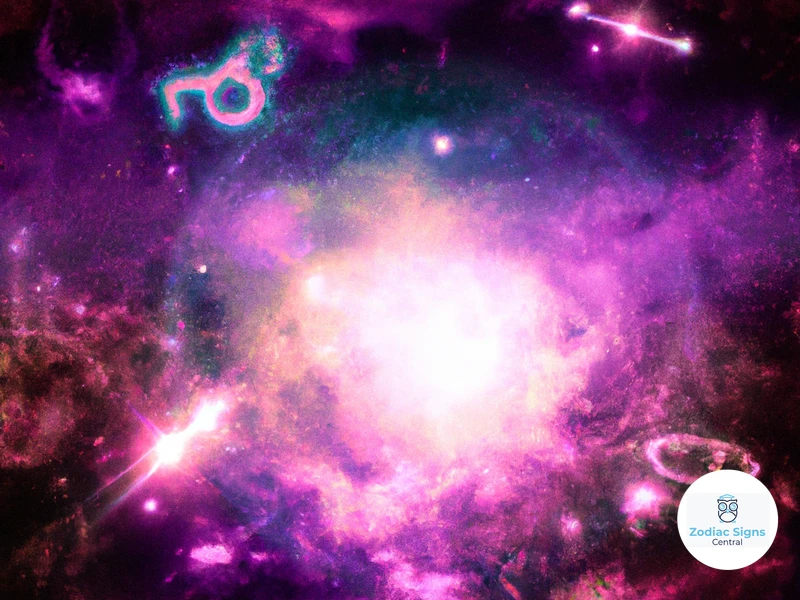
Symbols play a significant role in astrology, representing deeper meanings and connections to mythological and archetypal energies. Ancient symbols found in astrology have been passed down through the ages and continue to be used in modern-day astrological interpretations. For example, the sun symbolizes vitality, self-expression, and ego, while the moon represents emotions, intuition, and the subconscious. The twelve zodiac signs are also symbolically represented by different animals and objects, such as Aries, the ram, and Pisces, the fish. Each symbol carries specific qualities and characteristics associated with its mythological origins, adding depth and meaning to astrological readings. The significance of symbolism in astrology lies in its ability to tap into the collective unconscious and invoke archetypal energies that resonate with our human experience. By understanding the symbolism behind astrological glyphs and symbols, astrologers can provide more insightful interpretations and guidance to individuals seeking a deeper understanding of themselves and their place in the cosmos. So, symbols in astrology serve as a bridge between ancient mythological narratives and modern-day interpretations, helping us unlock the hidden layers of our own existence.
Ancient Symbols and Their Modern-Day Astrological Associations
Ancient symbols hold profound meaning and have been associated with astrology since early civilizations. These symbols have evolved over time and continue to play a significant role in modern-day astrological interpretations. Here are a few examples of ancient symbols and their modern-day astrological associations:
1. The Sun: The symbol of the sun, a circle with a dot in the center, represents vitality, creativity, and life force energy. In astrology, the Sun is associated with our core essence, ego, and self-expression.
2. The Moon: The crescent moon symbolizes intuition, emotions, and the subconscious mind. In astrology, the Moon represents our emotional nature, instincts, and nurturing qualities.
3. The Cross: The cross symbolizes balance, harmony, and the four elements of nature (earth, air, fire, and water). In astrology, the cross is associated with the cardinal, fixed, and mutable signs, representing initiation, stability, and adaptability.
4. The Serpent: The serpent, often depicted as the ouroboros (a snake biting its own tail), represents transformation, rebirth, and wisdom. In astrology, the serpent symbolizes the kundalini energy and the transformative power of the Scorpio zodiac sign.
5. The Celestial Spheres: Ancient civilizations believed in a celestial sphere, an imaginary sphere surrounding the Earth, where the stars and planets were positioned. This concept influenced the division of the zodiac into 12 signs, each representing a specific area of life and personality traits.
6. The Caduceus: The caduceus, a staff with two entwined serpents and wings at the top, symbolizes healing, balance, and divine communication. In astrology, the caduceus is associated with the planet Mercury, representing communication, intellect, and healing powers.
These are just a few examples of how ancient symbols have been integrated into modern astrology. The essence and significance of these symbols have transcended time, providing a deeper understanding of the astrological archetypes and their influences on our lives. By recognizing and exploring these ancient symbols, we can gain valuable insight into ourselves and the world around us. Debunking misconceptions about zodiac signs allows us to delve further into the symbolism and meanings associated with astrological signs.
The Significance of Symbolism in Astrological Interpretations
Astrology is a language of symbols, and symbolism plays a profound role in astrological interpretations. Astrological symbolism refers to the use of various signs, planets, and aspects to convey meaning and insight into individual personalities and life events. These symbols are derived from mythology, ancient cultures, and celestial observations. Each zodiac sign, for example, is represented by a specific symbol that encapsulates its essence. The significance of symbolism lies in its ability to capture the intricate complexities of human experiences and traits in a concise and easily recognizable form. Symbols serve as archetypes, representing a collective understanding of certain qualities and energies. Through the interpretation of symbols, astrologers can decipher the hidden layers within a birth chart or horoscope, revealing insights about an individual’s personality, strengths, and challenges. Symbolism allows astrologers to tap into the deeper realms of consciousness and connect with the collective wisdom that has been passed down through myths and legends. It provides a framework for understanding the complexities of human nature and the interconnectedness of the universe. By delving into the symbolic language of astrology, we can gain a deeper appreciation for the profound harmony and interconnectedness between the celestial and human realms, as well as unlock the hidden meanings within our own lives.
Mythology and Astrological Compatibility
Astrological compatibility involves examining the potential harmony or conflict between individuals based on their astrological signs. However, astrology goes beyond just the zodiac signs; it incorporates mythology to deepen the understanding of relationships. In astrology, each zodiac sign corresponds to specific mythological archetypes, which adds a layer of symbolic meaning to compatibility assessments.
How mythological connections impact relationship compatibility
When exploring relationship compatibility, astrologers often analyze how the mythological archetypes associated with each zodiac sign interact. For example, the fiery and passionate Aries is often paired with the independent and adventurous Sagittarius due to their shared association with the Greek hero, Jason. Their mythological connection evokes a sense of excitement and shared values in their relationship. On the other hand, the practical and grounded Taurus may find compatibility with the nurturing and empathetic Cancer, both associated with the mythological figure of Demeter, the goddess of agriculture and fertility. Their shared mythological archetype signifies a strong emotional bond and a focus on building a stable foundation.
Exploring the mythological aspects of synastry charts
In addition to individual zodiac signs, astrologers also examine synastry charts to assess compatibility. Synastry charts compare the positions of celestial bodies in each person’s birth chart to determine how they interact in a relationship. Within these charts, mythology provides valuable insights. For example, if one person has Mars, the warrior god, in close conjunction with another person’s Venus, the goddess of love, it may signify a passionate and intense connection. Similarly, if both individuals have their Moon, associated with emotions, in the same sign, it suggests emotional harmony and understanding.
By incorporating mythology into the analysis of astrological compatibility, astrologers can gain a deeper understanding of the dynamics between individuals. The mythological archetypes associated with each zodiac sign and their influences on synastry charts provide a rich tapestry of symbolism that enhances compatibility assessments and provides a unique perspective on relationships. Whether seeking love or understanding existing relationships, delving into the mythological aspects of astrology offers a fascinating journey of self-discovery and connection with others.
How Mythological Connections Impact Relationship Compatibility
Mythological connections play a significant role in determining relationship compatibility in the realm of astrology. When it comes to love and partnerships, astrologers often analyze the compatibility of individuals based on their zodiac signs and the mythological archetypes associated with them. Each zodiac sign has its own mythological origins and characteristics, which are believed to influence a person’s personality and relationship dynamics. For example, those born under the sign of Aries are associated with the mythology of the Greek god of war, representing courage and assertiveness. When an Aries individual enters into a relationship with someone born under the sign of Libra, associated with the Greek goddess of love and beauty, a dynamic of opposites can arise. This pairing could create a balance between assertiveness and harmony in the relationship. Similarly, examining the planetary gods and goddesses in astrology can shed light on relationship compatibility. For instance, the planet Venus, associated with the Greek goddess of love and beauty, is often connected to romantic relationships, and its placement in a person’s birth chart can reveal their approach to love and attraction. By exploring these mythological connections, astrologers can offer insights into the compatibility and potential challenges that may arise in relationships. It is important to remember that astrology is not a definitive predictor of whether a relationship will succeed or fail, but rather a tool that can help individuals gain a deeper understanding of themselves and their partners.
Exploring the Mythological Aspects of Synastry Charts
Synastry charts are a powerful tool in astrology for exploring compatibility and the dynamics of relationships. But did you know that these charts also hold a wealth of mythological symbolism? When analyzing synastry charts, astrologers often look for planetary aspects and configurations that reflect the archetypal energies of mythological characters or stories. For example, a couple with a prominent Mars-Venus connection may evoke the passionate and tumultuous love story of Aphrodite and Ares. Similarly, the strong influence of Pluto in a synastry chart may hint at a transformative and intense relationship, akin to the myth of Persephone’s abduction. Astrologers recognize that these mythological archetypes can provide insights into the challenges, dynamics, and potential growth within a relationship. By delving into the mythological aspects of synastry charts, astrologers gain a deeper understanding of the underlying narratives and patterns that shape the relationship dynamics between individuals. Through this exploration, astrologers can offer guidance and advice based on the wisdom of mythology, helping couples navigate the intricacies of their connections and fostering greater understanding and harmony. So, when studying synastry charts, don’t forget to explore the mythological layers that enrich the astrological interpretation.
The Influence of Myths on Astrological Forecasting
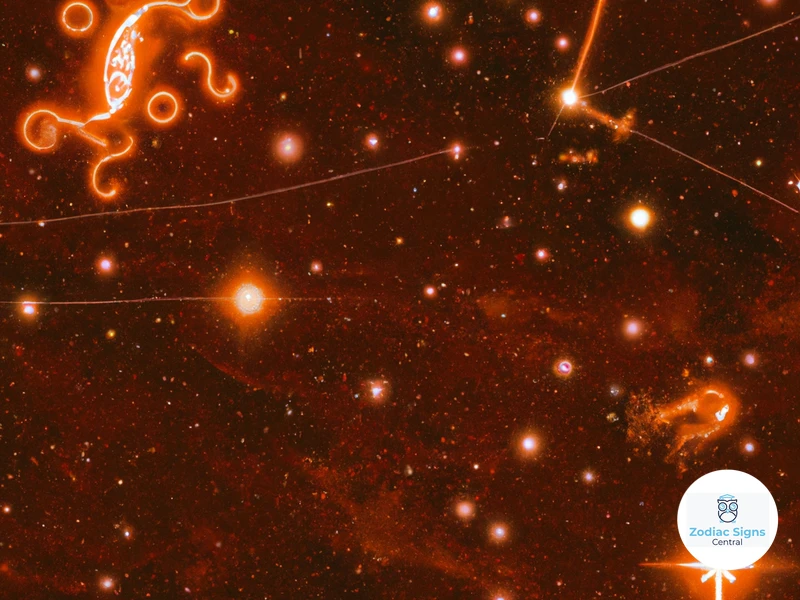
Mythology plays a significant role in astrological forecasting, as it adds depth and nuance to the interpretation of celestial events. Astrologers often draw upon mythological stories and archetypes to gain insight into the energies at play during specific astrological transits and progressions. By understanding the symbolic narratives of myths, astrologers can discern patterns and themes that may emerge in an individual’s life or on a collective level.
Using mythological stories in astrological predictions allows astrologers to connect with universal human experiences and tap into the collective consciousness. For example, the myth of the phoenix, rising from the ashes, symbolizes transformation and rebirth. When a significant planetary transit aligns with this mythological archetype, astrologers may interpret it as a time of personal growth and the emergence of a new chapter in a person’s life.
Another way that myths influence astrological forecasting is through the understanding of transits and progressions. Transits refer to the current positions of planets in the sky relative to an individual’s birth chart, while progressions represent the symbolic movement of the planets in a person’s life as they progress over time. By incorporating mythology into their interpretations, astrologers can delve deeper into the meaning behind these celestial movements. For example, the myth of Saturn, the ancient Greek god of time and discipline, can shed light on the challenging but ultimately rewarding qualities of Saturn transits or progressions. Astrologers might emphasize the importance of responsibility, maturity, and perseverance during such cosmic influences.
Myths have a profound influence on astrological forecasting. They enrich astrologers’ interpretations by providing timeless stories, archetypes, and symbolism that deepen our understanding of celestial events. By incorporating mythological narratives, astrologers connect with the collective unconscious, offer profound insights, and help individuals navigate the cosmic currents with wisdom and clarity.
Using Mythological Stories in Astrological Predictions
Using mythological stories in astrological predictions is a fascinating technique that allows astrologers to tap into the rich symbolism and archetypal energy present in ancient myths. By incorporating mythology into their interpretations, astrologers can provide deeper insights and a more nuanced understanding of astrological influences. One way to use mythological stories is by looking at the planetary transits through the lens of myth. For example, if a person is experiencing a challenging Saturn transit, drawing upon the myth of Saturn’s journey can offer valuable insights. Saturn, associated with discipline and boundaries, can be likened to the ancient god Kronos, who represents the passage of time and the consequences of our actions. By understanding the mythological attributes and symbolism connected to Saturn, astrologers can provide clients with a more comprehensive and meaningful astrological forecast. Another approach is to use mythological stories to interpret the birth chart. Each planet and zodiac sign is associated with specific mythological archetypes, and understanding these connections can enhance astrological interpretations. For instance, someone with their Sun in Aries can be linked to the mythological character of Mars, the god of war and energy. This connection can provide insights into the individual’s assertiveness, courage, and desire for independence. Embracing mythological stories in astrological predictions adds depth and richness to the practice, empowering both astrologers and clients with a greater understanding of the cosmic forces at play.
The Importance of Mythology in Understanding Transits and Progressions
Understanding transits and progressions in astrology is crucial for gaining insight into the unfolding cosmic energies and their impact on our lives. These astrological techniques involve observing the movement of planets in relation to our natal charts over time. However, to truly grasp the significance of these astrological phenomena, it is essential to consider their importance in the context of mythology. Mythology provides a rich tapestry of stories and archetypes that can offer deeper meaning and understanding to the astrological events unfolding in our lives. For example, when studying the transit of a particular planet, such as Mars, one can look to mythological figures associated with the planet, such as Mars (Ares) in Greek mythology. By delving into the stories and symbolism surrounding Mars, we can gain valuable insights into the themes and energies that may arise during a Mars transit. The fierce and warrior-like qualities associated with Mars, for instance, could indicate a period of increased assertiveness and drive. Similarly, when exploring progressions, which represent the ongoing evolution of our natal chart, we can delve into the mythological stories related to the planets involved in progression. By understanding these mythological connections, we can gain a more nuanced understanding of the energies in play and the potential lessons and growth opportunities that may arise. So, mythology plays a vital role in helping astrologers interpret transits and progressions, providing a wellspring of symbolic depth and meaning that enhances the astrological understanding of these dynamic cosmic influences.
Conclusion
In conclusion, the interplay between astrology and mythology is undeniable. Through the historical origins of astrology and mythology, we can see how these two disciplines have influenced and shaped one another over time. Astrology draws upon the rich symbolism and archetypes of mythology, using them as a framework to understand the human experience and the influence of the celestial bodies. Mythology, in turn, finds its narratives and characters intertwined with the astrological signs and planets, melding ancient stories with the language of the stars. The significance of symbols and symbolism in astrology cannot be overstated, as they provide a means of interpreting and conveying cosmic energies and influences. Moreover, the connection between myth and astrology extends beyond symbolism, impacting compatibility assessments, forecasting, and interpretations of transits and progressions. As we delve into the world of astrology, it becomes clear that mythology is not just a backdrop but an integral part of understanding and unlocking the secrets of the stars. Whether it’s exploring the mythological origins of the zodiac signs or using ancient stories to enhance astrological predictions, the role of mythology in astrology is undeniable and continues to influence our understanding and interpretation of the cosmic forces that shape our lives. So, as we gaze up at the night sky, let us remember the rich tapestry of myths and stories that have guided humanity’s understanding of the celestial realm for centuries.
Frequently Asked Questions
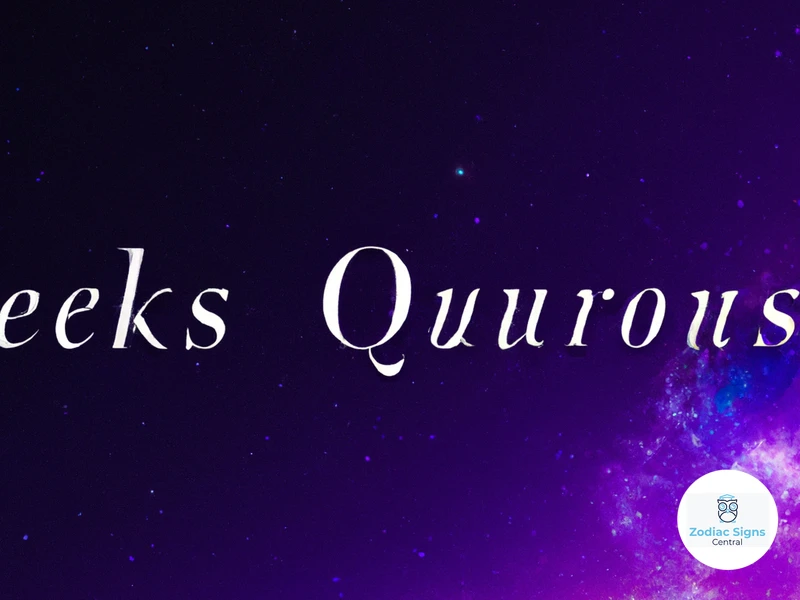
1. What is the role of mythology in astrology?
The role of mythology in astrology is to provide symbolic stories and archetypes that help interpret the meaning and influences of the celestial bodies. Myths add depth and layers of meaning to astrological interpretations, allowing us to connect with the ancient wisdom and universal themes embedded in the stars.
2. How did ancient civilizations interpret the stars?
Ancient civilizations interpreted the stars through the lens of mythology. They believed that celestial bodies were inhabited by gods and goddesses who guided human destiny. Astrologers observed the movements of the stars and planets, relating them to specific mythological figures and their stories to make predictions and understand human behavior.
3. Can astrology reveal the mythological origins of zodiac signs?
Astrology can indeed reveal the mythological origins of zodiac signs. Each zodiac sign has its own mythological story and symbolism, which helps shape the characteristics and traits associated with that sign. Understanding the mythological origins of the zodiac signs enhances our understanding of their unique qualities.
4. What are the planetary gods and goddesses in astrology?
In astrology, the planets are associated with various gods and goddesses from mythology. For example, Jupiter is linked to Zeus, the king of the gods, while Venus is associated with Aphrodite, the goddess of love and beauty. These planetary gods and goddesses embody the qualities and influences attributed to the planets in astrology.
5. How does symbolism play a role in astrological interpretations?
Symbolism is integral to astrological interpretations. Astrologers use symbols such as planets, zodiac signs, and aspects to convey meaning and understand the dynamics at play. Symbolism allows for a deeper exploration of individual and collective consciousness, helping us uncover hidden patterns and insights in astrology.
6. Does mythology influence relationship compatibility in astrology?
Yes, mythology can influence relationship compatibility in astrology. By examining the mythological connections between individuals’ birth charts, astrologers can gain insights into the dynamics and challenges that may arise in a relationship. Mythological archetypes provide a framework for understanding the complexities of human interactions.
7. What are synastry charts, and how do they incorporate mythology?
Synastry charts are astrological charts that compare the positions of two individuals’ planets and other astrological points. These charts can incorporate mythology by exploring how the mythological archetypes present in each person’s chart interact and influence the relationship. This adds a layer of depth to understanding compatibility and challenges in partnerships.
8. How can mythological stories be used in astrological predictions?
Astrologers can use mythological stories as metaphors and narratives to inform astrological predictions. By drawing on the symbolism and themes of these stories, astrologers can provide richer and more insightful forecasts. Mythological stories offer a framework for understanding the human experience and the potential outcomes indicated by astrological transits and progressions.
9. What is the connection between mythology and understanding transits and progressions?
Mythology plays a crucial role in understanding transits and progressions in astrology. Transits and progressions represent the ongoing evolution of an individual’s life journey, and by connecting these astrological events to mythological stories, we gain a deeper understanding of the archetypal energies and themes at play during different phases of life.
10. How does astrology merge mythology with modern interpretations?
Astrology merges mythology with modern interpretations by bridging ancient wisdom with contemporary perspectives. Modern astrologers continue to draw inspiration from mythological symbolism and stories, adapting them to fit the context of modern life. This integration allows for a richer and more nuanced exploration of astrology’s role in understanding ourselves and the world around us.
References
Frequently Asked Questions

What is the significance of mythology in astrology?
Mythology plays a crucial role in astrology as it provides the symbolic language and archetypal patterns that help astrologers interpret celestial influences.
How did astrology and mythology become intertwined in history?
Astrology and mythology became intertwined throughout history as ancient civilizations used mythological stories and symbolism to explain the celestial phenomena they observed.
What are some examples of mythological archetypes in astrology?
The zodiac signs and planetary gods and goddesses are examples of mythological archetypes present in astrology.
Are there specific mythological origins for each zodiac sign?
Yes, each zodiac sign has its own mythological origin story, which adds layers of meaning and symbolism to their astrological characteristics.
How do planetary gods and goddesses affect astrological interpretations?
Planetary gods and goddesses represent specific energies and qualities that influence astrological interpretations and provide deeper insights into personality traits and life experiences.
Can we draw parallels between astrological archetypes and mythological characters?
Yes, astrological archetypes often have characteristics and qualities that are similar to those of mythological characters, allowing us to draw meaningful comparisons and connections.
What role do symbols play in astrology?
Symbols in astrology carry rich meanings and convey complex ideas about cosmic influences, personal traits, and life events, providing a visual language for astrological interpretation.
Do ancient symbols still hold relevance in modern-day astrology?
Ancient symbols continue to hold significance in modern astrology as they represent universal themes and archetypal energies that are timeless and applicable across cultures and time periods.
How does mythology affect relationship compatibility in astrology?
Mythological connections and archetypes can have an impact on relationship compatibility as they reveal similarities, differences, and potential dynamics between individuals based on their astrological profiles.
How can astrology incorporate mythological stories for predictions?
Astrologers often use mythological stories to provide context, depth, and narrative to their predictions, linking celestial events with human experiences and collective consciousness.
